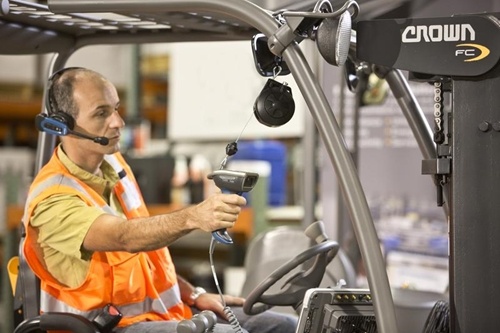
Forklifts are necessary pieces of equipment for some inventory warehouses and manufacturing plants. Employees use the vehicles to lift, transport and manage supplies. Using heavy machinery, however, includes certain risks.
Occupational Health and Safety reported there are about 85 fatalities and almost 35,000 serious injuries related to forklift operation every year. Accidents occur due to tipping vehicles, rough terrain, inexperienced drivers, dangerous fuels and careless co-workers.
Factories and warehouses need strategies in place that limit the potential risks associated with forklift operation and solutions to sustain best practices.
Finding Qualified Drivers
A major cause of accidents is driver error. Warehouses must ensure that every employee who works with forklifts has the training and experience necessary. The problem is it may be difficult to determine who is actually qualified to drive machinery.
Material Handling & Logistics said many job seekers claim to have a forklift certification to get a job but don’t have enough actual experience. Some people earn warehouse management degrees online without ever working with physical equipment and some applicants just outright lie. If a candidate claims to be OSHA-certified to operate machinery, keep in mind the Occupational Safety and Health Administration does not issue certifications.
Hiring employees to work heavy machinery should not be a responsibility solely shouldered by human resources. Machinery experts and safety supervisors should confer with managers when contemplating applicants for forklift positions. Every invested department should integrate their records to ensure unqualified candidates don’t slip through the cracks in the hiring system.
Avoiding Accidents
Once a forklift position is filled, new employees should work with experienced drivers to learn how machinery operates in a particular space. Every warehouse and production line is different, so a company must be aware of its own unique obstacles. The Centers for Disease Control and Prevention said forklifts cause injury when drivers neglect safety features, the damage goes unreported, workers ignore machinery limits and operators become distracted.
Many companies use mobile devices to supervise physical activities in a company space. Forklift drivers need convenient technology solutions like voice picking to check guidelines and report progress. A hands-free data collection procedure allows machinery operators to hear task requirements while keeping both eyes on the road. An RFgen white paper detailed how voice-directed inventory management solutions improve accuracy and employee focus.
Limiting Hazardous Chemicals
Forklift drivers who report activities through automated data collection devices provide managers with a complete picture of vehicle operation. Supervisors see the paths and procedures actually carried out by workers and can compare performance to best practices. A detailed record may demonstrate operational redundancies or help create shorter paths, improving supply chain management efficiency
Large vehicles that spend large amounts of time operating in warehouses may create another danger; hazardous fumes. The Washington State Department of Labor and Industries shared numerous examples of warehouse employees who suffered carbon monoxide poisoning from working around forklifts for too long. Even when people don’t show signs of contamination, forklift fumes could taint products kept in inventories.
Automated data collection solutions could provide workers with warnings after certain time periods or other metrics. Complete forklift operation visibility offers employees and managers the information they need to look out for potential dangers associated with fueling and using forklifts.
READ MORE: Using warehouse automation to create a safer workplace »






